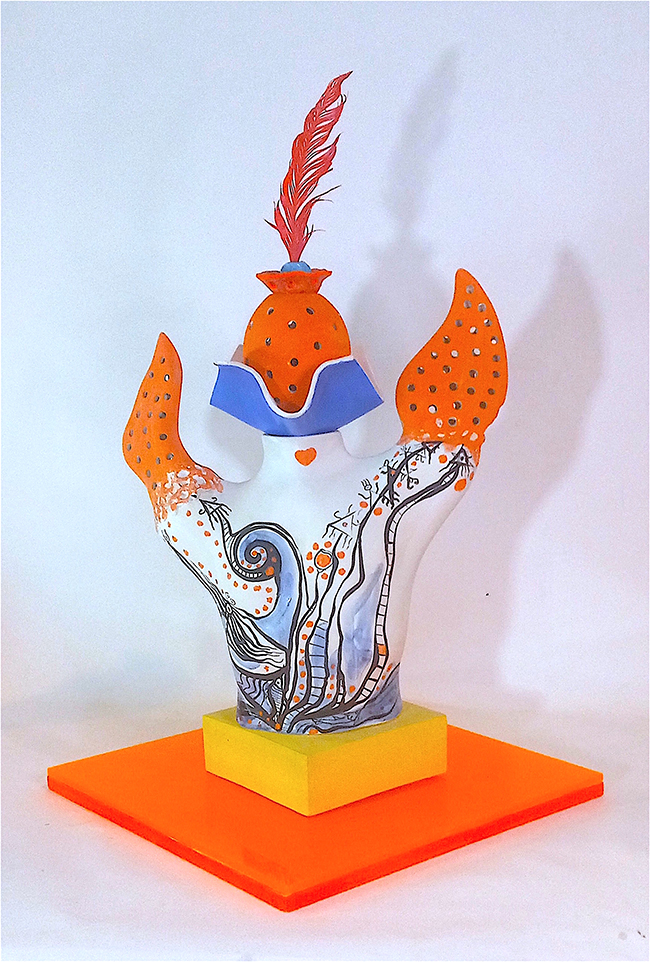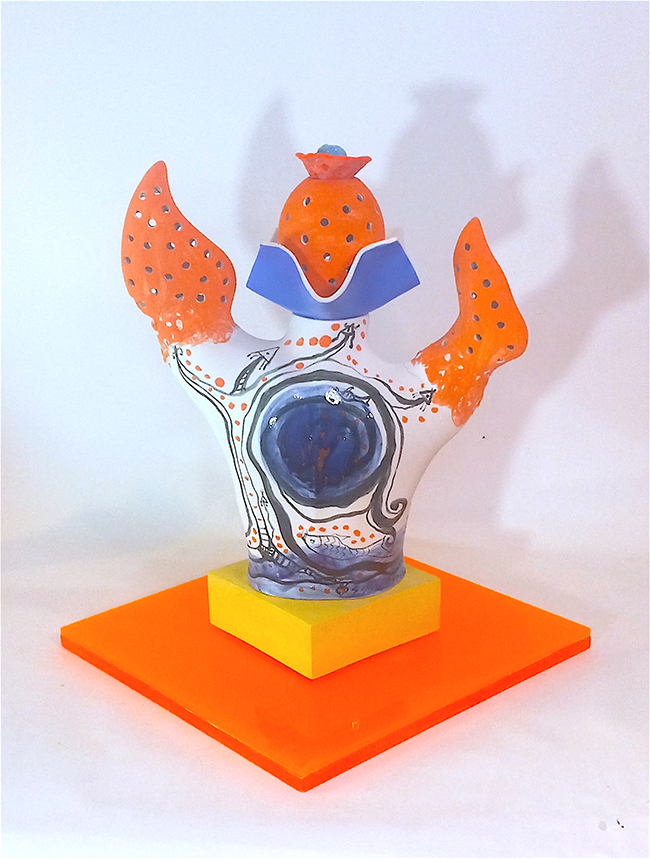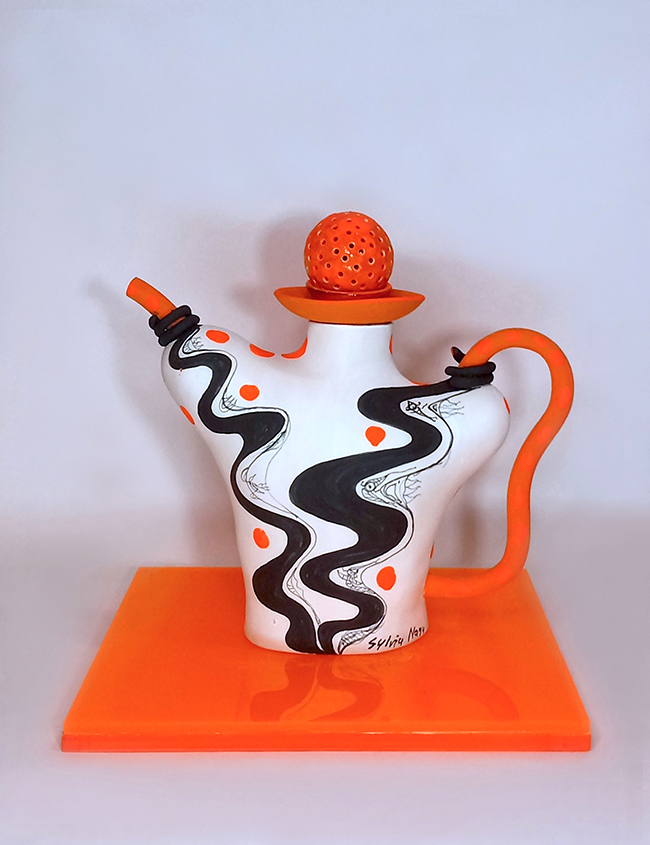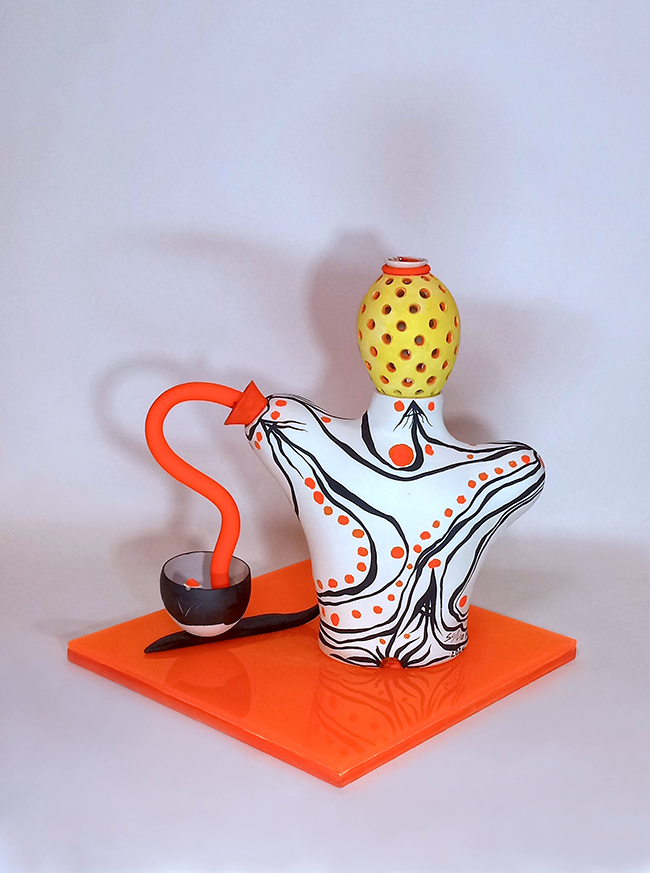Sylvia Nagy is an artist with a rich and diverse background, blending her expertise in industrial technology, art, and ceramic design. After receiving her MFA in Silicet Industrial Technology and Art from the Moholy-Nagy University in Budapest, Nagy further honed her skills at the Parsons School of Design, where she was asked to teach industrial ceramic design. Her experience includes creating a class on Mold Model Making in Plaster, showcasing her deep understanding of the technical aspects of ceramic arts. Nagy has been an Artist-in-Residence in several countries, including Japan, China, Germany, the USA, and Hungary, which has enriched her perspective and approach to art. She is also an elected member of the International Academy of Ceramics (IAC) in Geneva, Switzerland. Her works are part of museum collections in France, Spain, Korea, and other countries. Besides her artistic pursuits, Nagy is passionate about dance, fashion, styling, design trends, and photography.

Sylvia Nagy’s art is a powerful commentary on the environmental issues facing our world today. Her work “Torso-Pitcher,” created in 2024, is a compelling piece that uses the medium of slip-cast stoneware to address the pressing issue of ocean pollution. The sculpture, standing at 12 inches tall and equally wide and deep, is a testament to Nagy’s commitment to raising awareness about the damage caused by human activities to our oceans and marine life.

Nagy’s “Torso-Pitcher” is not just a piece of art; it’s a statement. The use of stoneware, a durable and resilient material, symbolizes the enduring impact of plastic pollution in our environment. Stoneware, traditionally associated with functionality and durability, is here repurposed to serve as a metaphor for the seemingly indestructible nature of plastic waste. The sculptural form of the torso, often a symbol of human strength and vulnerability, is juxtaposed with the idea of a pitcher, a vessel that traditionally holds water. This contrast draws attention to the irony of how vessels meant to contain and nurture life are now contributing to its destruction.

The tactile quality of the stoneware adds to the piece’s message. The smoothness of the slip-cast stoneware contrasts with the harsh reality of plastic pollution, creating a visual and conceptual tension that challenges the viewer to consider the consequences of their actions. The dimensions of the work, at 12 inches in all directions, give it a substantial presence without overwhelming the space, allowing it to engage viewers intimately while making a broader statement about the scale of pollution.
In her accompanying work, “Heart of Torso-Pitcher,” also created in 2024, Nagy continues this exploration of environmental responsibility. Like “Torso-Pitcher,” this piece is slip-cast in stoneware and shares the same dimensions, creating a visual and thematic continuity between the two works. However, “Heart of Torso-Pitcher” delves deeper into the concept of personal responsibility and the choices we make in our daily lives.

Nagy’s inspiration for this piece comes from her travels to Japan, where the culture of recycling and minimal waste deeply influenced her. In Japan, where land is scarce and wastefulness is frowned upon, the practice of using reusable materials is ingrained in daily life. This experience profoundly impacted Nagy and is reflected in the message of “Heart of Torso-Pitcher.” The work serves as a reminder of the importance of making conscious choices, not just for ourselves but for future generations.
The “Heart” in the title symbolizes the core of the issue—the need for a shift in mindset towards sustainability and responsibility. The piece is a call to action, urging viewers to consider the impact of their choices on the environment. By choosing reusable materials like ceramic and glass over plastic, we can reduce our footprint and protect our ecosystems.

The tactile nature of the stoneware again plays a crucial role in conveying the work’s message. The physical weight and solidity of the material remind us of the lasting impact of our choices, both positive and negative. The work’s dimensions allow it to be a personal, reflective piece, inviting the viewer to contemplate their role in the larger environmental picture.
Sylvia Nagy’s work is a blend of artistry and activism. Through her sculptures, she raises awareness about the critical environmental issues we face and encourages a shift towards more sustainable practices. Her use of slip-cast stoneware not only showcases her technical skill but also serves as a powerful metaphor for the resilience and durability of both the materials we use and the impact of our actions. Nagy’s art is a reminder that while we are capable of causing great harm to our planet, we also have the power to make choices that can heal and protect it.

